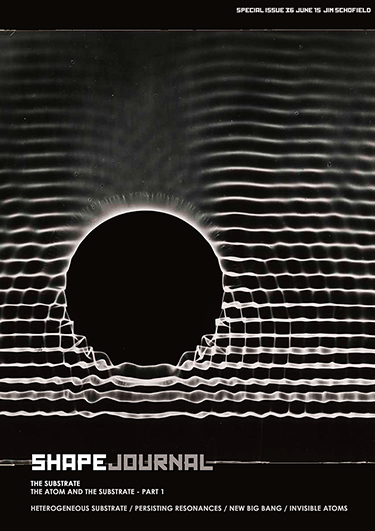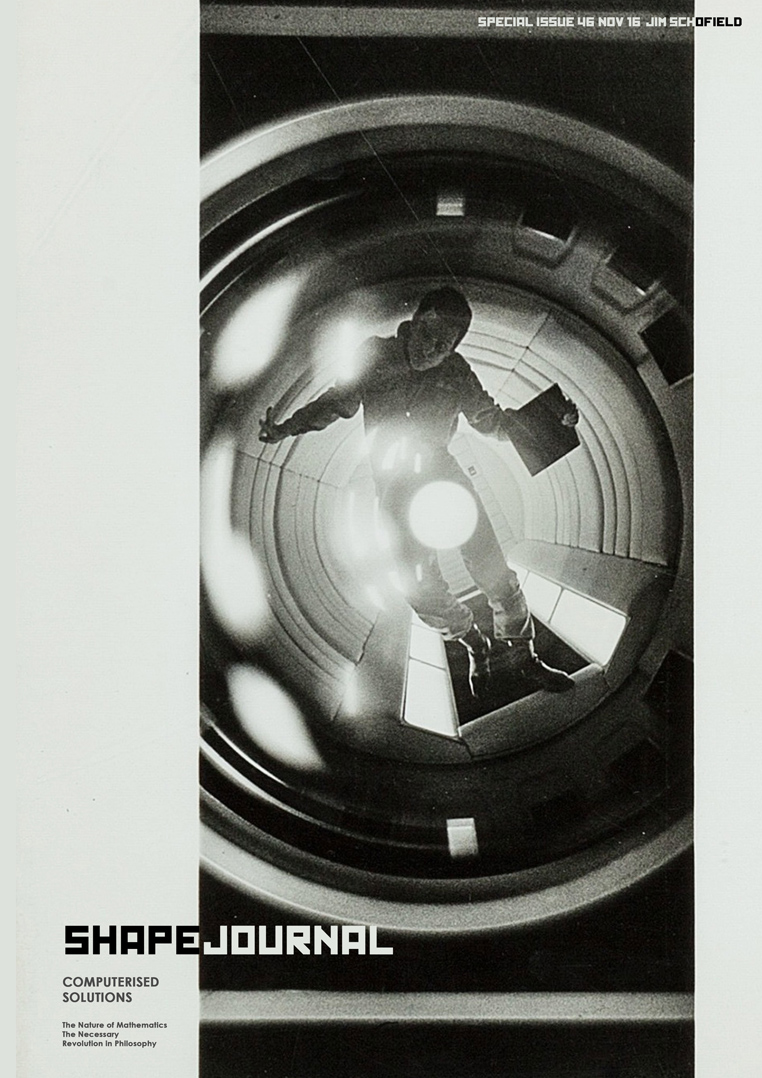 |
| Ferrofluid on Magnet |
The original particles devised (by this theorist) to "effectively begin" to deliver a totally undetectable Universal Substrate - the so-called neutritrons, though they were successful in several very important ways, they did not deliver either Electrical or Magnetic Fields in response to the presence there of charged particles or permanent magnets.
The nature of the neutritrons - as mutually-orbiting-pairs, each one consisting of both a negatively-charged electron, and a positively-charged positron, seemed to be sound, for they would, indeed, be undetectable, while delivering several necessary properties required by that Substrate.
See The Atom and the Substrate for more on this 'aether' theory
So, three things were clear:
1: New additional particles with a similar mutually-orbiting form - that would enable a similar cancelling of opposing properties, and
2: that these would have to consist of two mirror-image pairs (in equal numbers) and moving with a constant "random motion", so that, overall, they would appear undetectable too, and
3: the two new joint-particles would, separately, also have to be capable of delivering electromagnetic effects if aligned around either charged particles, or involved in delivering magnetic "lines-of-force".
Now, these are, clearly, contradictory features, and initially seemed impossible to simultaneously deliver. Until, that is the mutually-orbiting pairs were considered to be of differently-sized sub-particles, with exactly opposite properties across the two proposed new Substrate units.
The neutritron had been devised via two diametrically opposite sub particles of the same size: so the task seemed-to-be to find other Leptons that would fit the bill. Other, already-known joint-entities, such as a "mock atom", consisting of a Proton and a Muon, indicated what these necessary extra particles might well be possible.
By using oppositely-charged pairs consisting of Muons, Taus and anti-Muons and anti-Taus, the required joint-particles seemed possible.
And, whilever they were in constant random movement, involving equal numbers of each kind, they would be undetectable - overall!
But, their unavoidable magnetic moments (due to the differing sizes of the sub particles involved) would create the necessary electromagnetic effects if they were both immobilised-and-aligned around charged particles, or linked in static aligned chains, by their magnetic moments, in magnetic situations.
Now, all this has been published elsewhere, but such a Universal Substrate - available absolutely everywhere, presents all kinds of possibilities in special situations.
The so-far-assumed situations do seem to cover crucial phenomena in the most commonly occurring situations. But anomalies have been mounting in unusual areas of study - such as very low temperature environments and thin film situations..
Indeed, the 2016 Nobel Prize in Physics was awarded for work successfully carried out in precisely these areas, by a trio of British-born scientists (commencing 40 years ago). Also a group at Princeton in the USA have produced "examples" of the fabled Majorana particles where a single "string" of iron atoms are closely associated with a lead substrate in a superconducting state.
Such evidence cries out for an explanation involving an undetectable Universal Substrate - composed, as this theorist's version does, of "Majorana-type" joint-particles, involving both matter and antimatter sub-units.
 |
| Physicists at Princeton |
But, attempts to address these objectives has been hopelessly stymied by the "formulae-first" approach being employed, along with the Copenhagen standpoint. Crucial explanatory aspects are simply never dealt with.
Frankly - "the tail always wags the dog", so attempts to pull together some sort of explanation are made impossible, for what is needed to attempt to do that, is simply never addressed!
Now, this theorist was, in the past, confronted by the very same problems in addressing the anomalies in the famed Double Slit Experiments, until, that is, he included a Universal undetectable Substrate, that played an enabling role. And, when all the posed-questions of such a Substrate were fully addressed, all of those anomalies were solved, without any recourse whatsoever to the premises of the Copenhagen approach.
But, a great deal of experimental work was available for the many different versions of the Double Slit phenomena, but here, in these investigations, that isn't the case.
The language used in all the accounts I have read is ambiguous - the Princeton example is characteristic. They seem to be seeking Majorana particles at all costs (and with purely pragmatic reasons - associated with Quantum Computers). Accounts switch from talking about electrons of the iron atoms - to locating them in the underlying superconductor.
You can see the problem!
If, as I assume, a Universal Substrate (composed of Majorana particles) is literally everywhere, yet undetectable:-
1: In the surrounding Space
2: In the Superconductor
3: Inside the Iron atoms
Then, as with the changing conditions that have become apparent, in Fields and elsewhere, in such a Substrate, it seems evident that in the very special conditions of the Princeton set-up, all sorts of unique circumstances will be inevitable.
And, this isn't a small matter.
The Crisis in Physics, which precipitated the Formalist Retreat that culminated in the Copenhagen Stance, had been building up for centuries, and meant that physicists were forced to switch their stance, constantly, to enable the addressing of different objectives.
The finally, assumed-to-be, over-riding one was both purely formal representation, along with a long-established, deep-seated and effective Pragmatism - concerning both Prediction and Production as the primary purposes in studying Reality, and its Explanation as, at first secondary, and finally an inconvenient luxury that could be totally dispensed with!
The inevitable anomalies and impasses that naturally arose from the involved contradictory premises, were avoided by dealing only with observed patterns, and depending upon the "assumed Consistency" of Mathematics, in dealing with such things, as the real underlying determinators of all phenomena.
It was of course, not only mistaken, but also entirely an idealist stance.
Now, this whole philosophical problem has been addressed elsewhere, and is available for those who wish a fuller investigation, but clearly it cannot be fully re-addressed here. Suffice it to say that just such a comprehensive investigation has been carried out over many years, and has also recently focussed its attention upon a revolutionary, new approach in the Sciences, and particularly in Physics, with a strictly Materialist - Holist stance, which can finally address the idealist-pragmatist cul de sac that is Copenhagen, and allow a major advance in Explanations of Reality. But, when the attention of literally all physicists is solely focussed upon Forms and Formulae, and their pragmatic use, the important questions are never addressed.
Any break-through will have to be of a similar impact to Darwin's Origin of Species in Biology, but, this time, necessarily involving a major philosophical revolution, and will not be given the credence it requires until it totally buries Copenhagen, once and for all.

































